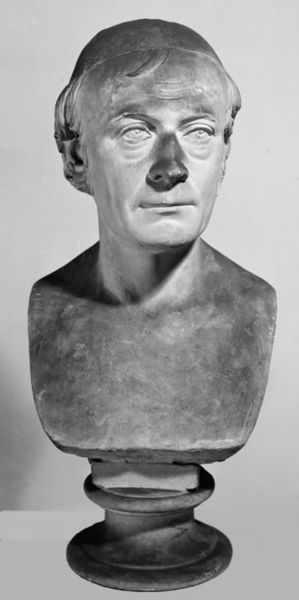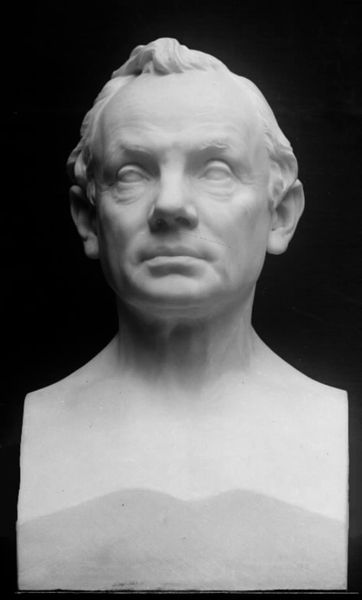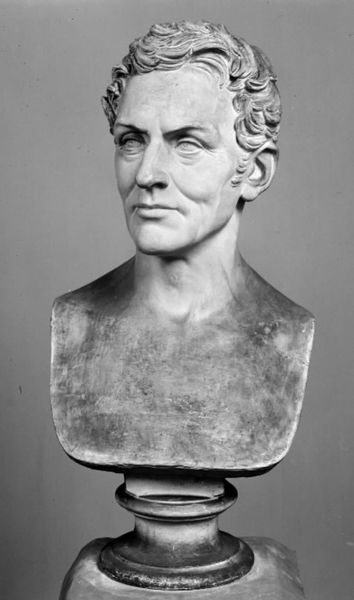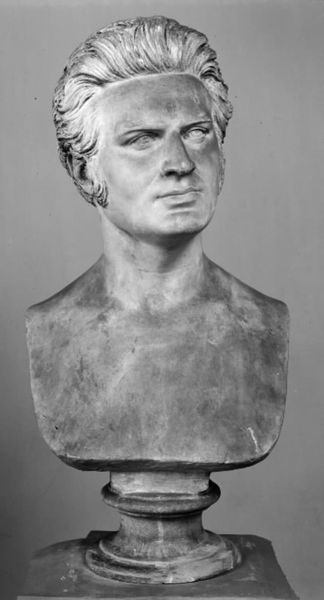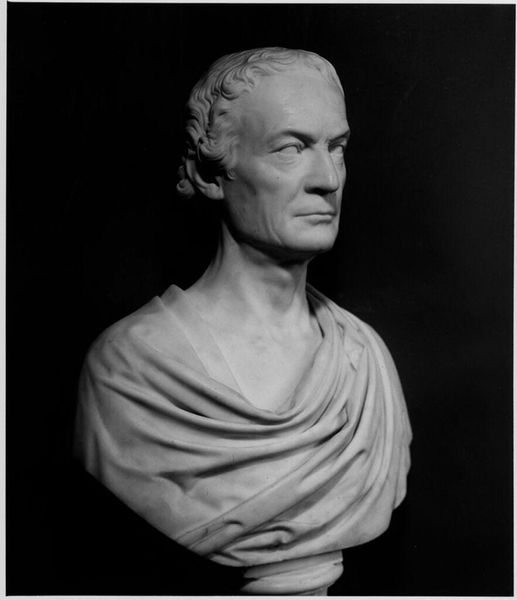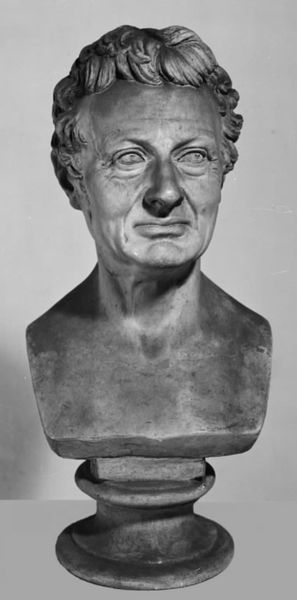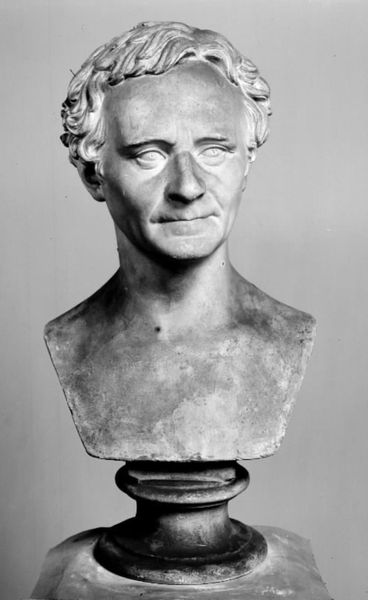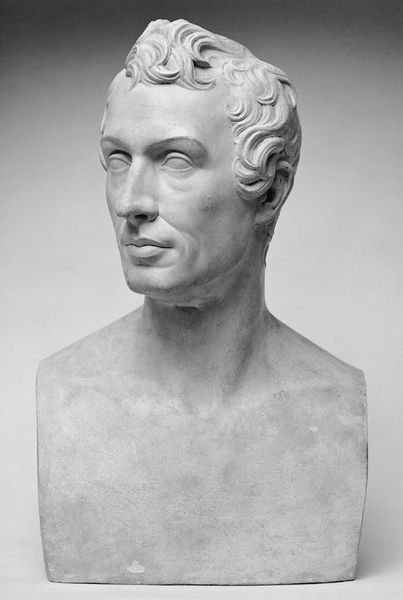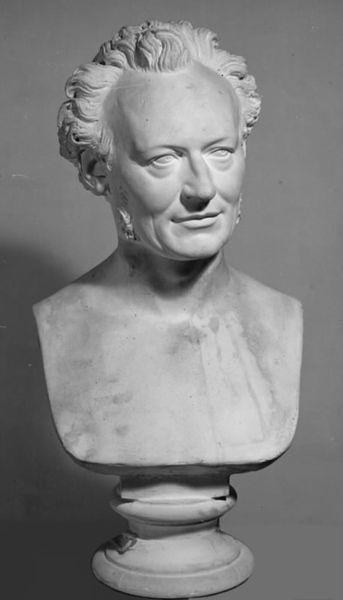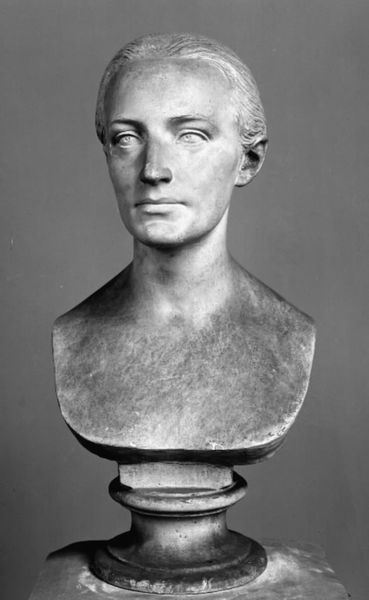
sculpture, marble
#
portrait
#
neoclacissism
#
sculpture
#
sculpture
#
history-painting
#
marble
Dimensions: Height: 24 in. (61 cm)
Copyright: Public Domain
Curator: Before us stands "Alexander Hamilton," a marble bust sculpted by Giuseppe Ceracchi around 1794. It's currently housed here at the Metropolitan Museum of Art. Editor: My immediate impression is one of restrained power. The cool, smooth marble gives a sense of dignity and seriousness, fitting for a Founding Father. There's an almost severe clarity in the form. Curator: Absolutely. The choice of marble itself speaks to the period's embrace of classical ideals and their connection with democratic virtues. Think about the quarries, the labor involved in extracting, transporting, and sculpting this stone – a complex network of human effort behind a single object representing civic leadership. Editor: And the execution is precise, almost academic. Look at the detail in the hair, the crisp folds of the drapery. It’s clearly drawing upon the visual language of ancient Roman portraiture, seeking to ennoble the subject through classical reference. It is an homage of forms to a historical narrative. Curator: Precisely. But the question is, whose history does it serve? These busts, intended for display in public spaces and private collections, become powerful symbols of status. Consider the social networks through which Ceracchi secured his commissions, including people like Hamilton, but also members of the revolutionary elite who defined early America. Editor: Yet the artistic skill involved is undeniable. The light plays so beautifully across the surfaces, revealing the careful modelling. It’s about achieving an ideal of character through form; this determined brow, strong jawline – it's all contributing to an image of intelligence and leadership. This is Neoclassical portraiture working to project an idea. Curator: Indeed. Beyond this man's face, however, is the marble and all the resources needed to create the object, it shows the process of building Hamilton's fame as something solid. He’s part of a whole system of artistic production and also political production as well. Editor: Thinking about the aesthetic dimension, I do find something cold and impersonal about it. Perhaps the material reinforces that sense of detachment? However, one must admire the enduring power of classical form. Curator: Yes, I’d agree the coolness of the marble connects it with economic status in general. These objects are meant to represent powerful status positions in society, like a solid piece of stone. Editor: Seeing Ceracchi's rendering here allows me to really appreciate the Neoclassical aesthetic ideals from centuries past. Thank you. Curator: It encourages one to question those established histories and observe closely what they reflect today. Thank you.
Comments
No comments
Be the first to comment and join the conversation on the ultimate creative platform.
